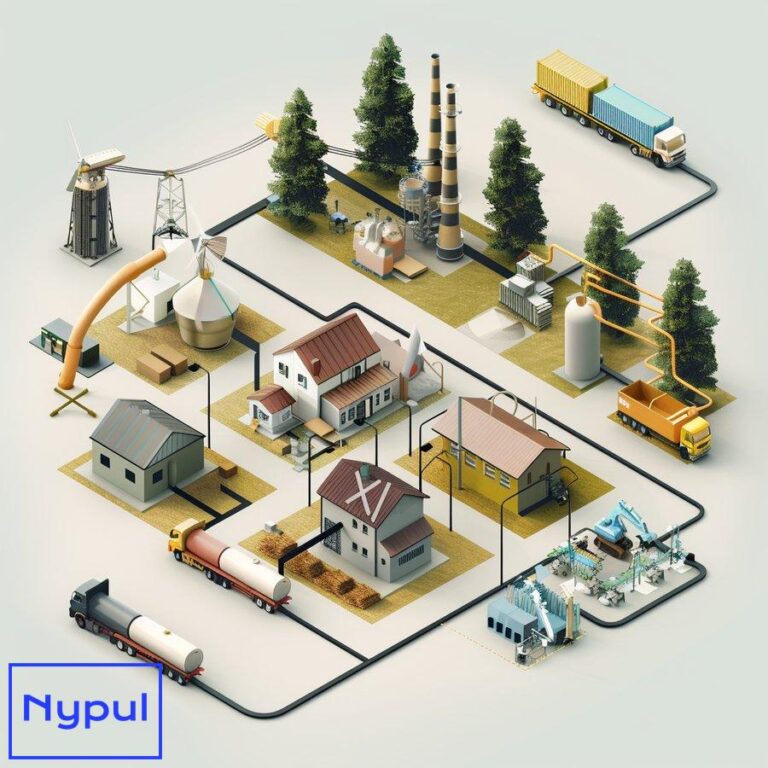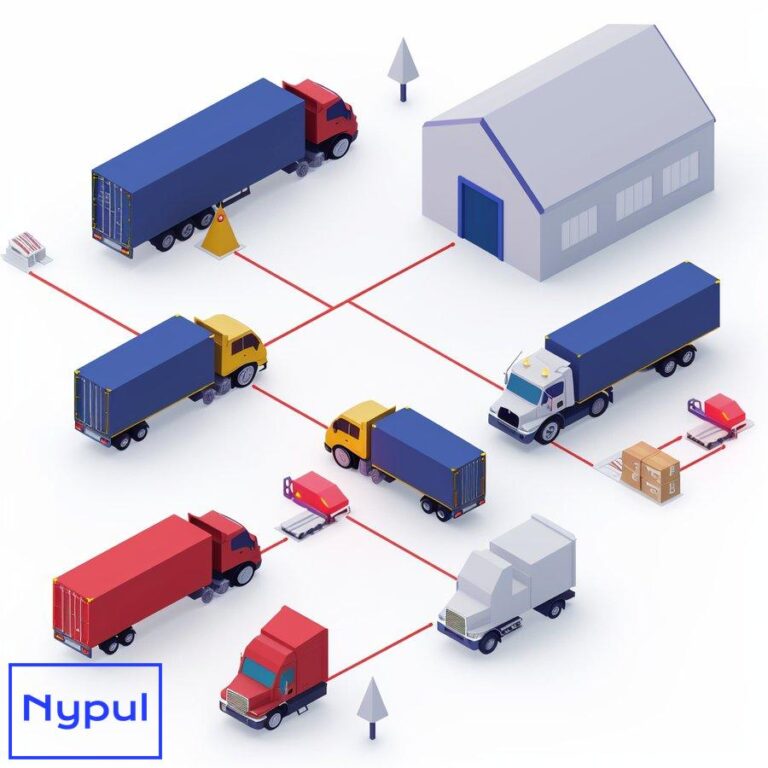What Is the Ideal Location for a Warehouse
What factors influence the ideal warehouse location?
Selecting the ideal warehouse location is a multifaceted decision that can significantly impact a business’s operational efficiency and profitability. Various factors come into play, including market proximity, transportation networks, workforce availability, costs, regulatory considerations, and technological infrastructure.
Market Proximity
The proximity of a warehouse to its target market is crucial. A warehouse located near customers can reduce transportation costs and lead times, enhancing customer satisfaction. Businesses should analyze customer demographics to understand where their primary consumer base resides. This analysis helps in determining the optimal location for the warehouse, ensuring that it is strategically positioned to meet demand efficiently.
Transportation Networks
Transportation infrastructure is another critical factor. A well-connected warehouse can facilitate faster and more cost-effective distribution of goods. Businesses must assess the local transportation networks, including highways, railroads, and ports, to ensure that the warehouse can efficiently receive and dispatch products. A location with multiple transportation options can provide flexibility and resilience in logistics operations.
Workforce Availability
The availability of a skilled workforce is essential for warehouse operations. Companies should evaluate the local labor market to ensure that they can hire qualified personnel. Factors such as wage levels, labor laws, and the presence of training programs can influence workforce availability. A location with a robust labor pool can help businesses maintain operational efficiency and reduce turnover rates.
Cost Considerations
Cost is a significant factor in warehouse location decisions. Businesses must consider various expenses, including rent, utilities, labor, and transportation costs. A comprehensive cost analysis can help identify the most financially viable location. Additionally, businesses should be aware of any hidden costs, such as taxes and local regulations, that could impact overall expenses.
Regulatory Factors
Regulatory considerations can also influence warehouse placement decisions. Local zoning laws, environmental regulations, and safety standards must be taken into account. Companies should ensure that their chosen location complies with all relevant regulations to avoid potential legal issues and operational disruptions.
Technological Infrastructure
The technological capabilities of a warehouse location can affect operational efficiency. Businesses should assess the availability of high-speed internet, communication services, and other technological infrastructure that can support warehouse management systems. A location with advanced technological capabilities can enhance inventory management and streamline operations.
How does customer and supplier distribution affect warehouse placement?
The distribution of customers and suppliers plays a pivotal role in determining warehouse placement. A strategic location can optimize supply chain efficiency and enhance service levels.

Customer Distribution
Understanding customer distribution is vital for selecting a warehouse location. Businesses should analyze customer locations, order volumes, and delivery frequency. A warehouse positioned near a high concentration of customers can reduce transportation costs and improve delivery times.
Supplier Distribution
Similarly, the location of suppliers can influence warehouse placement. A warehouse situated close to key suppliers can minimize lead times and transportation costs. Businesses should evaluate their supply chain network to identify the optimal location that balances customer and supplier proximity.
Balancing Customer and Supplier Needs
Finding a balance between customer and supplier distributions is essential. Businesses may need to conduct a cost-benefit analysis to determine the most advantageous location. This analysis should consider transportation costs, delivery times, and service levels to ensure that the warehouse location supports overall supply chain efficiency.
Why is assessing transportation networks crucial for warehouse location?
Transportation networks are critical to warehouse location decisions because they directly impact logistics efficiency. A well-connected warehouse can facilitate timely deliveries and reduce operational costs.
Types of Transportation Networks
Businesses should assess various transportation networks, including:
-
Roadways: Proximity to major highways can enhance truck access and reduce transit times.
-
Railroads: Access to rail services can provide cost-effective transportation for bulk goods.
-
Ports and Airports: Locations near ports or airports can facilitate international shipping and expedite imports and exports.
Analyzing Traffic Patterns
Understanding local traffic patterns is also essential. Businesses should analyze peak traffic hours and congestion levels to identify potential delays in transportation. A location with minimal traffic congestion can enhance delivery efficiency and reduce costs.
Intermodal Transportation Options
Intermodal transportation options, which involve using multiple modes of transport, can provide flexibility and resilience in logistics operations. A warehouse located near intermodal facilities can facilitate seamless transitions between different transportation modes, optimizing supply chain efficiency.
How does workforce availability impact warehouse site selection?
Workforce availability is a crucial factor in warehouse site selection. A skilled and reliable labor force can enhance operational efficiency and reduce turnover rates.
Evaluating Local Labor Markets
Businesses should conduct a thorough analysis of local labor markets to assess workforce availability. Key considerations include:
-
Wage Levels: Understanding local wage rates can help businesses estimate labor costs.
-
Skill Levels: Evaluating the skill levels of the local workforce can determine whether the available talent meets operational needs.
-
Training Programs: The presence of local training programs can enhance workforce skills and ensure a steady supply of qualified personnel.
Labor Laws and Regulations
Companies should also consider local labor laws and regulations that may impact hiring practices and operational flexibility. Understanding these regulations can help businesses navigate potential challenges related to workforce management.
What cost considerations are essential when choosing a warehouse location?
Cost considerations are paramount when selecting a warehouse location. Businesses must conduct a comprehensive cost analysis to identify the most financially viable options.

Rent and Utilities
Rent is often one of the most significant expenses associated with warehouse operations. Businesses should compare rental rates across different locations and consider the availability of utilities, such as electricity, water, and internet services.
Labor Costs
Labor costs can vary significantly depending on the location. Companies should analyze wage levels and the availability of skilled labor to estimate overall labor expenses.
Transportation Costs
Transportation costs are another critical factor. A warehouse located near major transportation networks can reduce shipping expenses and enhance delivery efficiency. Businesses should evaluate the transportation costs associated with different locations to make informed decisions.
Hidden Costs
Businesses should be aware of potential hidden costs that could impact overall expenses. Local taxes, regulatory compliance costs, and maintenance expenses should all be factored into the cost analysis.
Cost-Benefit Analysis
Conducting a cost-benefit analysis can help businesses weigh the financial implications of different warehouse locations. This analysis should consider both direct and indirect costs to identify the most advantageous option.
How do regulatory factors influence warehouse placement decisions?
Regulatory factors can significantly influence warehouse placement decisions. Companies must navigate various local, state, and federal regulations to ensure compliance and avoid potential legal issues.

Zoning Laws
Zoning laws dictate how land can be used and can impact warehouse placement. Businesses should ensure that their chosen location is zoned for industrial or commercial use to avoid legal complications.
Environmental Regulations
Environmental regulations may also affect warehouse placement. Companies should assess local environmental laws and ensure that their operations comply with regulations related to waste management, emissions, and land use.
Safety Standards
Safety standards are crucial for warehouse operations. Businesses should evaluate local safety regulations and ensure that their chosen location meets all relevant safety requirements. This assessment can help prevent accidents and ensure compliance with local laws.
What technology and infrastructure requirements should be considered?
Technology and infrastructure requirements are essential considerations in warehouse location decisions. A well-equipped warehouse can enhance operational efficiency and streamline logistics processes.
Technological Capabilities
Businesses should assess the technological capabilities of potential warehouse locations. Key considerations include:
-
Internet Connectivity: High-speed internet access is essential for modern warehouse operations, including inventory management and communication.
-
Warehouse Management Systems (WMS): The availability of advanced WMS can enhance inventory control and streamline operations.
Infrastructure Quality
The quality of local infrastructure can impact warehouse operations. Businesses should evaluate the condition of roads, utilities, and transportation networks to ensure that their chosen location supports efficient logistics.
Future Technology Needs
Companies should also consider their future technology needs when selecting a warehouse location. A location that can accommodate technological advancements and upgrades can provide long-term operational benefits.
How can risks be assessed and mitigated in warehouse location selection?
Risk assessment is a critical component of warehouse location selection. Businesses must identify potential risks and develop strategies to mitigate them.
Identifying Risks
Key risks to consider include:
-
Natural Disasters: Assessing the risk of natural disasters, such as floods, earthquakes, or hurricanes, is essential for ensuring operational continuity.
-
Economic Risks: Understanding local economic conditions can help businesses anticipate potential disruptions related to market fluctuations.
Risk Mitigation Strategies
Businesses can implement various risk mitigation strategies, including:
-
Insurance Coverage: Ensuring adequate insurance coverage can protect against potential losses related to property damage or business interruptions.
-
Emergency Preparedness Plans: Developing emergency preparedness plans can help businesses respond effectively to unforeseen events.
Which tools and methods are effective for warehouse location analysis?
Several tools and methods can assist businesses in conducting warehouse location analysis. These tools can provide valuable insights and support informed decision-making.
Geographic Information Systems (GIS)
GIS technology can help businesses visualize customer and supplier distributions, transportation networks, and potential warehouse locations. This technology allows for spatial analysis and can enhance decision-making processes.
Cost-Benefit Analysis Tools
Cost-benefit analysis tools can help businesses evaluate the financial implications of different warehouse locations. These tools can facilitate comparisons between potential sites and support informed decision-making.
Simulation Models
Simulation models can help businesses assess the operational efficiency of different warehouse locations. By simulating various scenarios, companies can identify potential challenges and optimize their logistics strategies.
How do you make the final decision on warehouse location?

The final decision on warehouse location should be based on a comprehensive analysis of all relevant factors. Businesses must weigh the pros and cons of each potential location and consider their long-term goals.
Collaborative Decision-Making
Involving key stakeholders in the decision-making process can enhance the quality of the final decision. Collaborative decision-making allows for diverse perspectives and can lead to more informed choices.
Scenario Planning
Scenario planning can help businesses anticipate potential challenges and develop strategies to address them. By considering various scenarios, companies can make more resilient decisions regarding warehouse location.
Continuous Evaluation
Once a warehouse location is selected, businesses should continuously evaluate its performance and make adjustments as needed. Regular assessments can help identify areas for improvement and ensure that the warehouse continues to meet operational needs.
In conclusion, selecting the ideal warehouse location involves a thorough analysis of various factors, including market proximity, transportation networks, workforce availability, costs, regulatory considerations, and technological infrastructure. By carefully evaluating these factors and employing effective tools and methods, businesses can make informed decisions that enhance operational efficiency and support long-term success.






